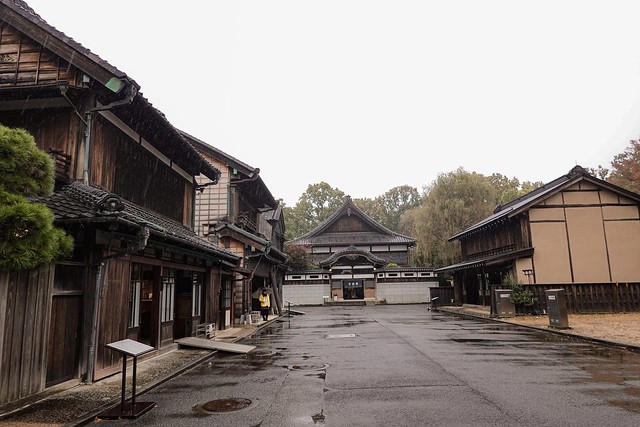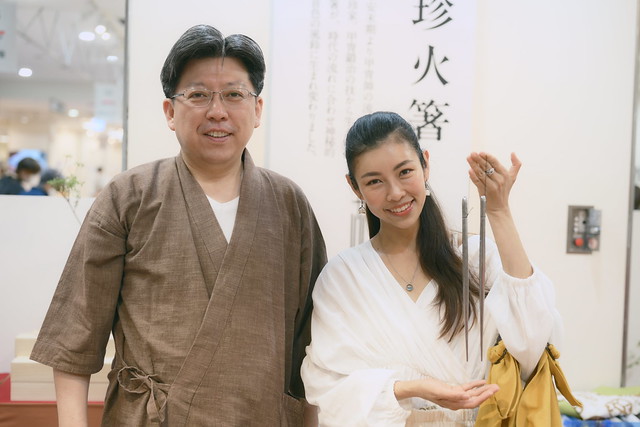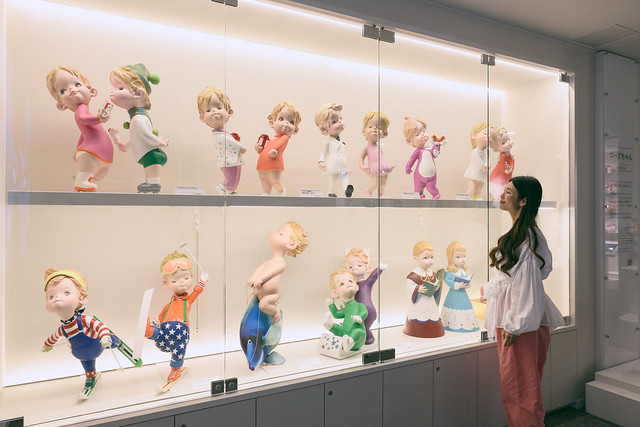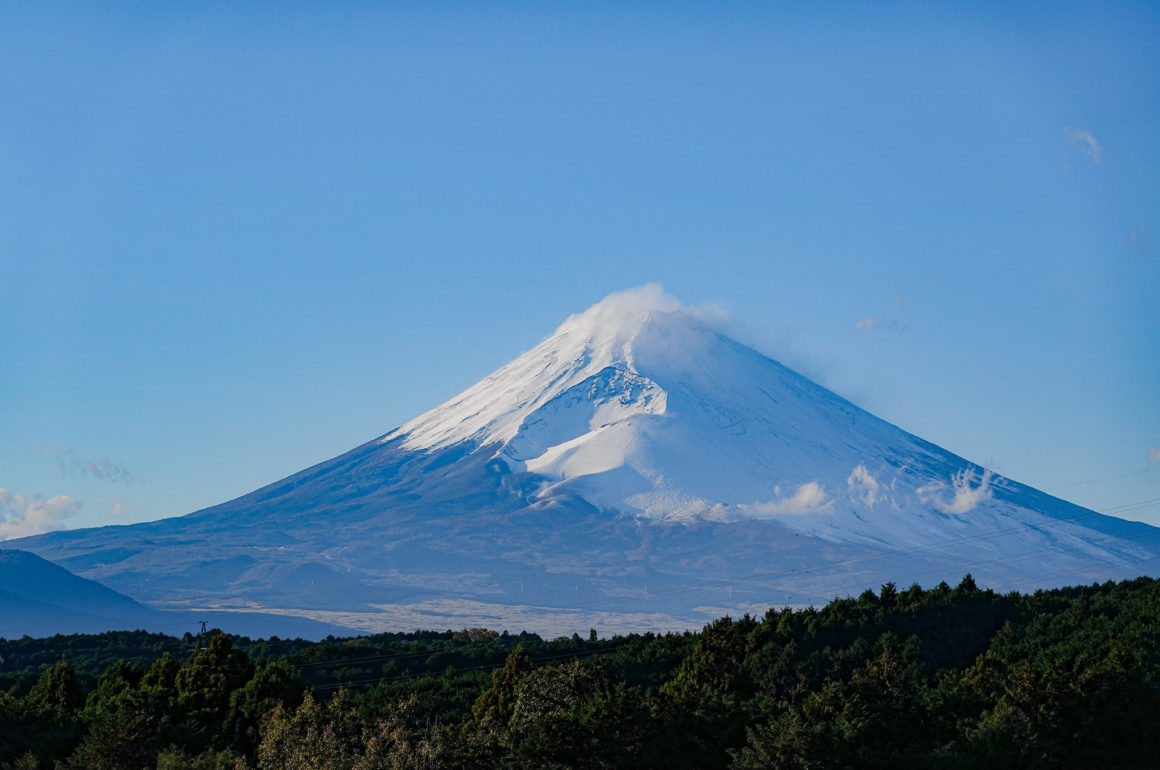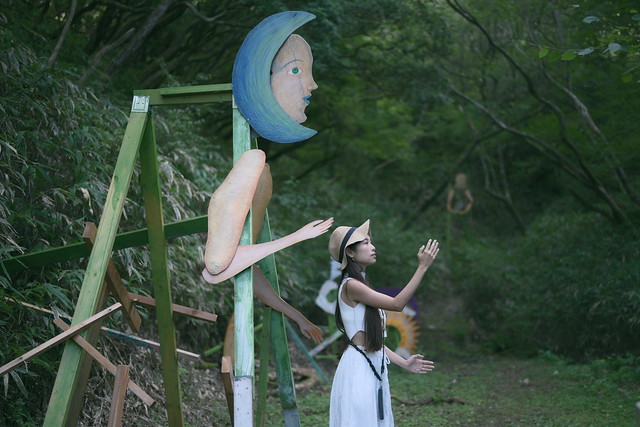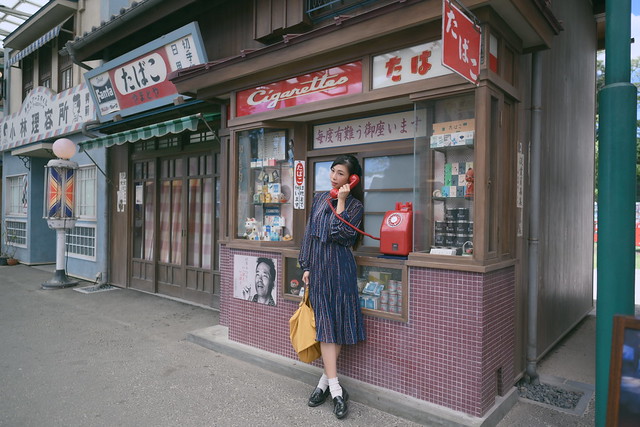
Welcome to Tokyo again!
After experiencing the rich culture and delve deep into the history of Edo-Tokyo, today we are going to enjoy a ultra relaxing day exploring an almost totally un-Tokyo side of Tokyo – hidden real deep outside the busy 23 wards of the metropolitan city. My theme of today – #StillTokyo.
What is a Tokyo Sightseeing Taxi?
In short, Tokyo Sightseeing Taxi is a door-to-door service that will pick you up and drop you off (within the 23 wards and Tama area) wherever you want touring all of Tokyo, with a professional English-speaking driver-guide that makes your traveling around greater Tokyo a comfortable bliss!
If you haven’t, read my previous blog posts on Tokyo Sightseeing Taxi and what it is all about.
PICK UP

Today is a special day as I have Elsa, BunnyTokyo as my day-trip buddy! So glad she said yes to me as I really wanted someone to share with me the excitement exploring another off the beaten tourist path of Tokyo.
Our driver of the day is Ricardo! I am pleasantly surprised at how diverse Tokyo Sightseeing Taxi’s driver-guides are, as Ricardo is Japanese-Brazillian who grew up in Brazil and decided to move to Japan in search for new explorations. He speak fluent English, Portuguese and Japanese.

Let’s go!!
Edo Tokyo Open Air Architectural Museum 江戸東京たてもの園
I won’t lie. Where we are going today, is very far off the usual places you will see tourist going in Tokyo. In fact, we are going so deep into the hidden Tokyo that you’d better prepare snacks, music and even a nap for the journey, as there are lots of driving to do today, but luckily not done by you!
The first destination of the day is Edo Tokyo Open Air Architectural Museum, located at Koganei city in Western Tokyo. The tricky part of getting there is that getting there involves possible changes of train and a bus ride. To get rid of all that logistic headache, that’s where Tokyo Sightseeing Taxi comes in handy – especially on a rainy, and very cold day.
As you may have seen in the Edo-Tokyo Museum, the Edo Tokyo Open Air Architectural Museum is the extension of its indoor facility, with its many exhibition of historic building from Edo period to rather recent era.
You see, Tokyo has gone through extensive development in the past century, and some iconic buildings were torn down or destroyed in either natural disaster or sadly, war. These significant buildings were relocated or reconstructed here in order to preserve a chapter of architectural history of Tokyo, and I absolutely love the idea.

The museum itself is a large park full of pristine nature, it’s almost like a really, really quiet theme park where you slip back in different time zones. You know what, I actually think albeit its rather remote address, it actually makes the perfect spot for various themed photography. Now I just totally spilled my secret plan. But you are welcome. All I want is for people to know the best and hidden gems of Tokyo.

The East zone is my favorite, where you get a taste of Taisho Roman / Showa nostalgia mix, recreating real shitamachi streetscape that I find ultra charming.

Check out the buildings! You may enter some of the shop houses so there are photogenic spots everywhere. There are a few photography restricted areas, just make sure you read the instruction given to you at the visitor center where you purchase the entrance ticket.
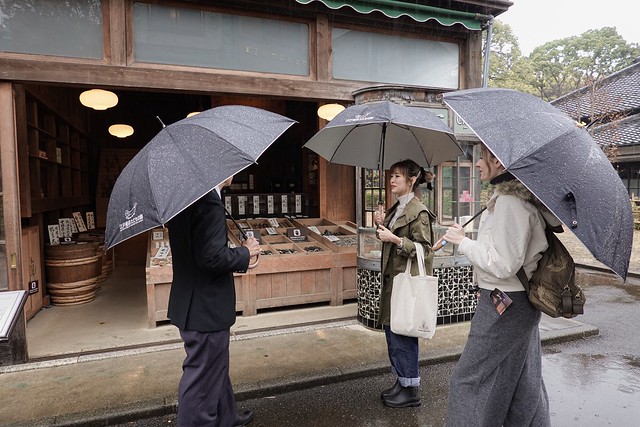
Ricardo’s grandparents were from Japan so he told us little stories about how the previous generations lived while touring the houses.

We are at a sundry shop where there are display of real merchandise such as beer bottles and canned food.

Some of the items look painfully familiar and nostalgic to make you feel really old.

Little cigarette stall.

There’s also a really retro sento (bath house) and it’s one of the very rare time you get to enter the bath fully clad or even, visit the opposite gender’s bathhouse.
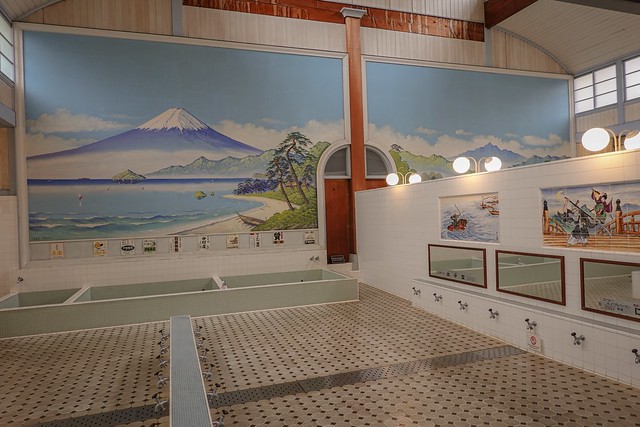
I think some of the bathhouses in Japan still has illustrated backdrop like that!

Love how beautifully explicit this painting is.
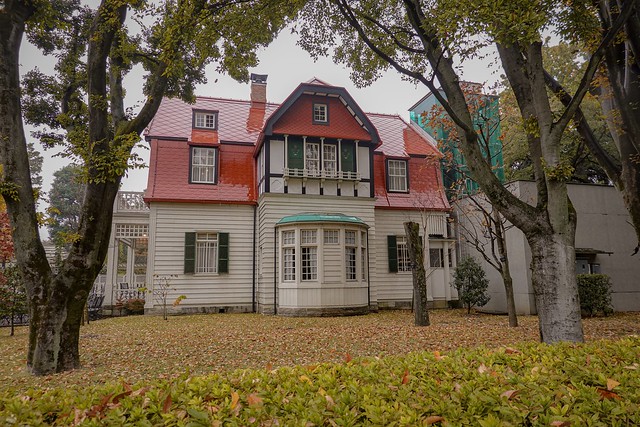
A western-style building – house of George de Lalande.

There are even the gassho-zukuri houses that you see in Gifu’s shirakawago, where you find an irori inside just perfect for a chilly rainy day.
Entrance fee: JPY400 (only!!!)
Website: https://www.tatemonoen.jp/english/
Ishikawa Brewery 石川酒造
When it comes to Japanese soul beverage – sake, I believe the image of abundant rice fields and pure waters of Niigata, Hyogo or Hokkaido comes to mind for many people, but can you believe that there’s actually made-in-Tokyo sake?

Yes, Tokyo sake starts right here at Ishikawa Brewery, founded in 1863 in Fussa City (福生市), Western Tokyo. Honestly you won’t believe that you are in Tokyo. (Yes! #StillTokyo!)

Really atmospheric beer garden!
This is a pair of 400-year-old sacred Keyaki (zelkova) trees called the Meoto Tree – Couple tree – signifying the inseparable marriage of rice and water – key ingredients in making sake.

This is a large cauldron that was actually used to boil water for beer brewing, which has survived the WWII.

Too cute to be alcoholic. Keep off from children haha.
They do host English guided brewery tour so please check out their website for reservation.
Website: http://tamajiman.co.jp/en/
Akigawa Valley 秋川渓谷
Next up we went on to enjoy a therapeutic scenic adventure at Akigawa Keikoku – a tranquil hotspring town located at the foothill of Okutama, Western Tokyo. Again, as it is pretty far out from city center, those who can’t be bother to struggle with logistic, Tokyo Sightseeing Taxi is your best bet.

Yes. This is #StillTokyo.
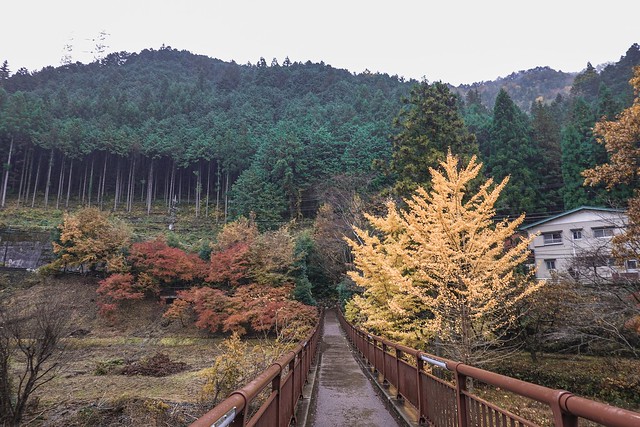
The onsen we were heading to is called Seoto No Yu(瀬音の湯). While autumn was almost coming to an end for most part of Japan, we still managed to get a glimpse of the colored leaves amidst untouched nature.

Weather wasn’t co-operating too well that day but a super therapeutic hot foot bath is no doubt one of the best indulgence on a cold, rainy day!

If you have more time, there’s day-trip onsen for those who fancy a full body soak.

Elsa and I were just happy getting our feet warmed up.

It’s worth checking out the restaurant overlooking the abundant nature of Akigawa valley especially during autumn season. And the food made of local catch and harvest is not just delicious, but extremely affordable too!
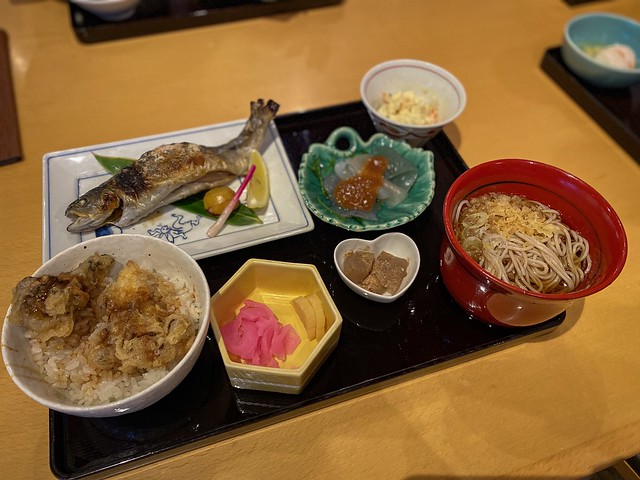
A set meal ranges from JPY800 to JPY1500, featuring seasonal vegetables (maitake tempura), local river fish (nijimasu), konnyaku jelly which is a specialty in this area and a mini bowl of soba. I finished it all and still craving for more.
Website: http://www.seotonoyu.jp/
Jindaiji Temple 深大寺
Tokyo is filled with historical spiritual spots and here’s the second oldest temple – Jindaiji, located in Chofu city. (The oldest is of course, Sensoji of Asakusa).
It houses the oldest national treasure of a Buddha statue in Eastern Japan since year 733.

Is it really worth traveling all the way here for a temple? You bet, Jindaiji is believed to be one of the most powerful temples to help get rid of bad luck especially during a 厄年 (yakudoshi) – an unlucky year (Chinese people will get this!) and countless of believers have come here to pray for good luck.

Other than a spiritual pilgrimage, the temple is actually really calming with its serene atmosphere. You can feel your energy healed just strolling around the compound admiring fallen leaves and fishes swimming in the stream.
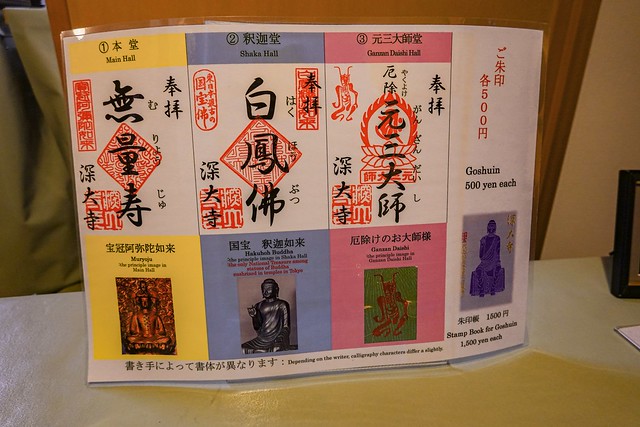
I got my Goshuin here, and somehow I am really attracted to the phrase “無量寿”, which means “infinity longevity”. Yeah I guess I want to live a long time! Haha.

A beautiful daruma sitting in front of the main hall.
Website: https://www.jindaiji.or.jp/en/
Kitaro Chaya, Chofu

Okay before you leave Jindaiji, remember to pop by the Kitaro Chaya just by the street leading up to the temple so you won’t miss it.
If you remember, I have blogged about the Yokai Town in Tottori, and here’s a super mini version of it right in Tokyo! What is the relation of Chofu with Mizuki Shigeru, the famed author of GeGeGe No Kitaro series, you ask? Well, it is said that Chofu is Shigeru’s second home so it is natural that the town pays homage to this spirits/ghost/monster loving manga author.

It’s ultra fun to spot the yokai-related decor around the chaya, what’s more a dark, wet rainy day makes it eerier than ever, just the amount of spookiness I love.

Keep your eyes peeled for the hidden yokai. And be very, very careful.
Yokai aside, soba noodles is said to taste exceptionally good in this town, and so popular that there might even be a queue! Unfortunately all of them were close by the time I got there so if you are in the area, please try it and let me know how it’s like!
GOOD BYE

Richardo has made a really good driver, guide and accompany for the whole trip, so much we almost didn’t want to say goodbye.
Alas, I had more travels to make, so here’s the end of my 2019 instalment of Tokyo Sightseeing Taxi, and I hope to explore more of Tokyo in the comfort of a luxurious ride soon!
A few FAQ:
1.Do I need to reserve my Tokyo Sightseeing Taxi?
Yes, you will need to make a reservation and you can either do so by calling in or book online or by email, depending on the taxi company. Check them out here.
2. Must I follow the course or can I plan my own itinerary?
You are absolutely free to pick the course for easy reference or customize your own itinerary.
3. How is the fare calculated?
It is generally based on the duration used during your trip but certain taxi companies do provide fixed-price courses so do check with them!
If you are keen to explore Tokyo hands-free, fuss-free with all the extra comfort and safe guarded by your experience driver-guide, check out Tokyo Sightseeing Taxi!
http://www.taxi-tokyo.or.jp/english/kanko_taxi/
You can also check out the below URL for the model course for useful reference ^^
TOKYO SIGHTSEEING TAXI MODEL COURSE
The itinerary of this post is Model Course 2.
This post is supported by Tokyo Metropolitan Tourism Taxi Promotion Project.


